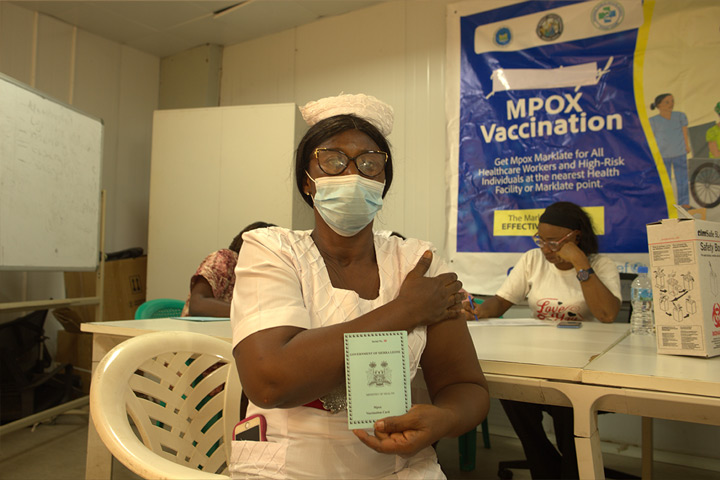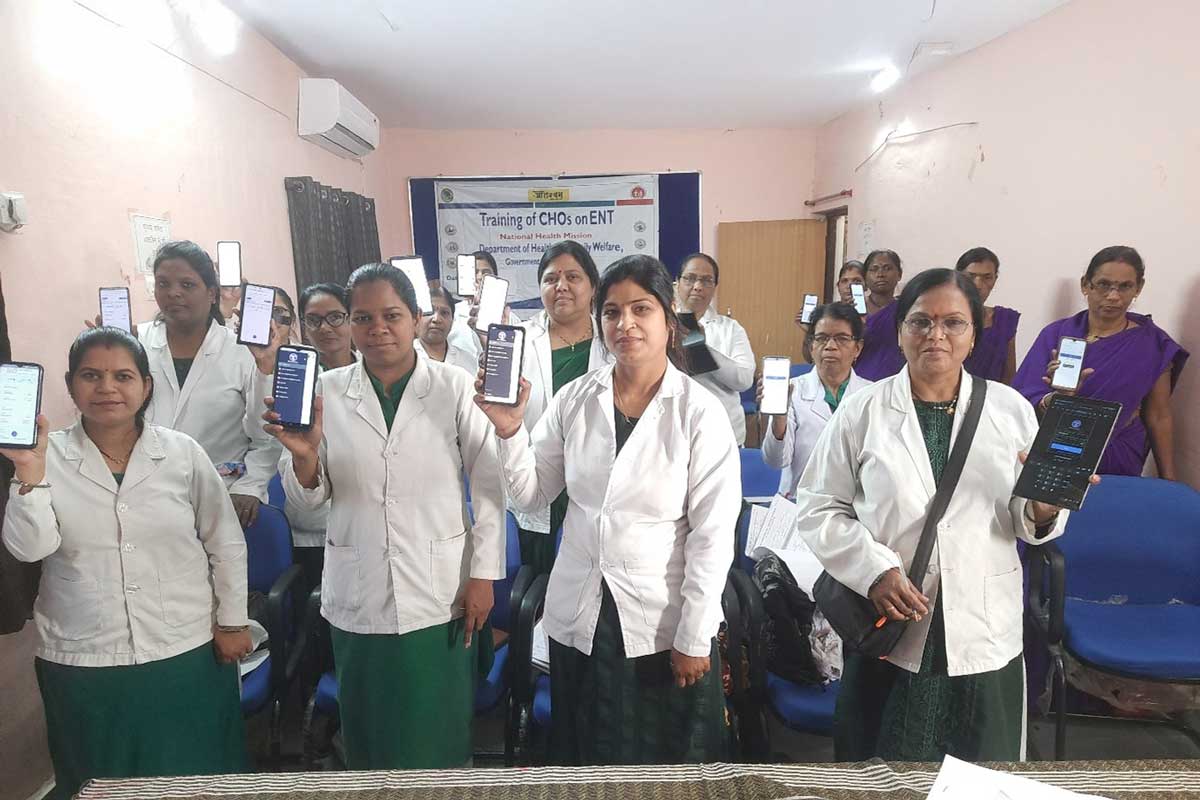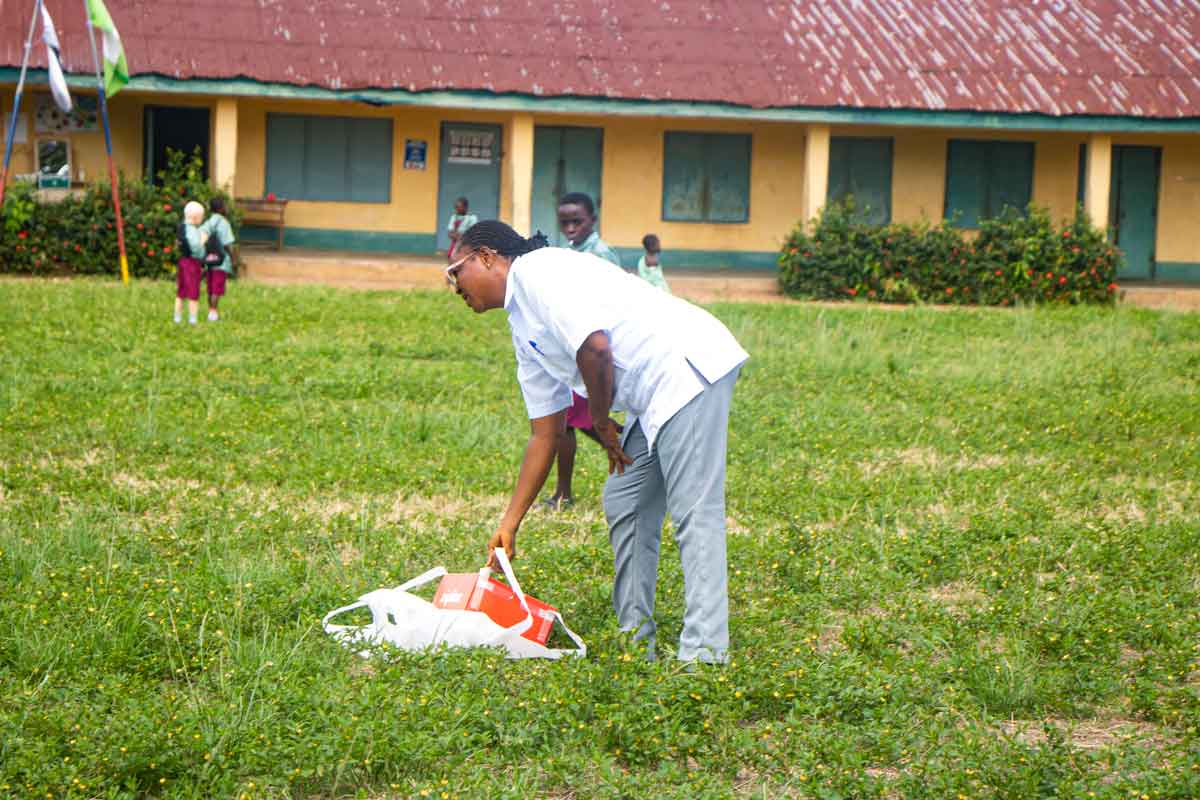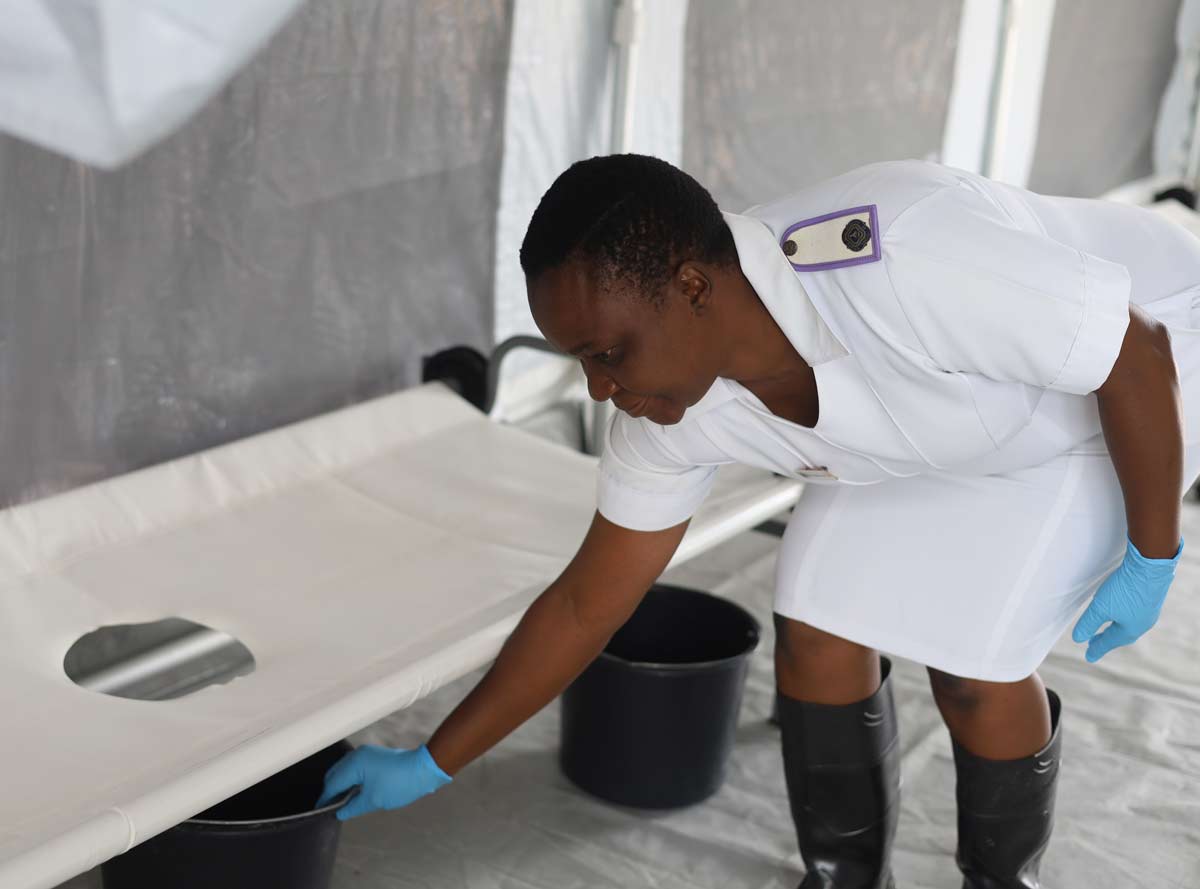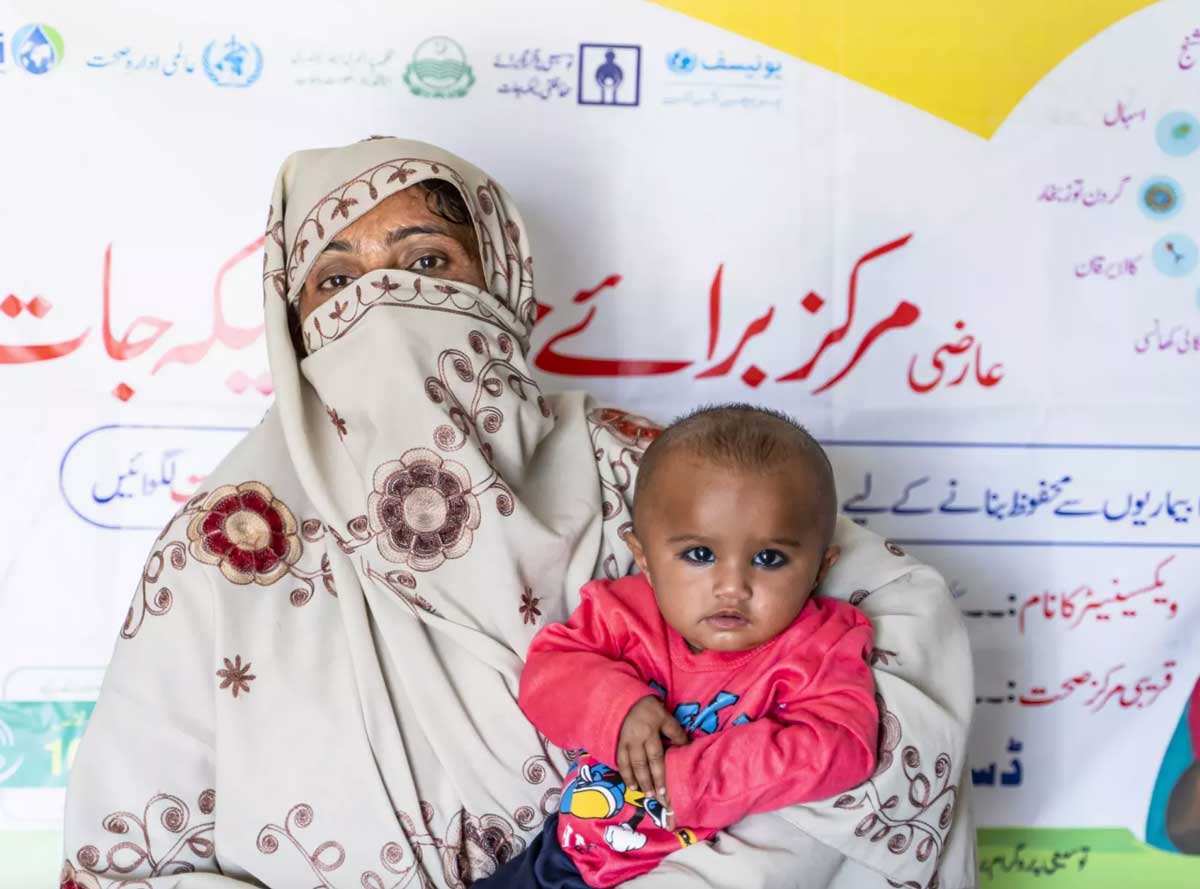Caregivers in Mozambique share the barriers they face in vaccinating their children
What prevents parents from vaccinating their kids? A new VillageReach study in Mozambique looks at the myriad hurdles caregivers must overcome to protect their children.
- 12 July 2022
- 7 min read
- by Sonia Rao , Village Reach

Caregivers in Mozambique want their children to be fully vaccinated, but often physical and social barriers stand in their way. Just ask Esselina, a mother living in a rural area of Zambézia Province.1 She wants her 2.5-year-old twin daughters to be healthy and knew that fully vaccinating them was their best defence.
"On the days that we have to take the child to vaccination, we have to get food and water to leave with the [other] children who will stay at home one day before, because the trip to the hospital is no joke."
But, despite her intentions and efforts, her twins never completed their routine immunisations – an outcome not unusual in the Namarroi and Gilé districts of Zambézia Province, where one out of every five children who start their immunisations never complete them.2
At VillageReach, we are learning about the nuances around barriers to vaccination through the Bate Papo Vacina!/Let’s Talk About Vaccines! Study. The study, being conducted in Mozambique and Malawi, aims to understand these barriers and identify, implement and evaluate community-driven solutions to reduce immunisation dropouts. Our findings in Mozambique, using methods such as photo-based interviews, uncovered a number of issues that caregivers, who in our study were all women, face. Here are some things we learned.
The bumpy road to health care

A negative experience at the health facility can be one of the principal deterrents to completing vaccination. Caregivers spend anywhere from half a day to a whole day preparing for and travelling to a health facility. Anticipating a negative experience when they get there makes vaccination dropout more likely.
The vaccination journey often begins the day before or early in the morning of the vaccination, to prepare for the health facility visit.
"On the days that we have to take the child to vaccination, we have to get food and water to leave with the [other] children who will stay at home one day before, because the trip to the hospital is no joke,” said Ermelinda, a mother from Zambézia province.
If the children are too young to be home alone, the caregiver also needs to find a relative or friend to care for them. Caregivers who are unable to find childcare may have no alternative but to stay home and miss their child’s scheduled vaccination.
Once these arrangements are made, caregivers feel they must bathe their child to avoid potential shaming and embarrassment for bringing a “dirty” child to the facility. This requires travelling on foot to the nearest water source to either bathe the child or get water to carry back home.

Have you read?
Nurses, and other caregivers and patients may laugh at a mother who arrives with an unbathed child. Angelina, another mother from a rural area in Zambézia, explained that nurses sometimes tell mothers to return home if their child is not bathed before a facility visit, noting that, “This happens all the time…[and] when it happens, everyone around them feels embarrassed by it.”
“I was yelled at by the clinician for not taking the child for vaccination regularly, and this caused me not to return the following month.”
Getting the required health documents prepared in advance is also critical. Caregivers said that if a mother forgets the child’s vaccination card at home, health workers may send them back. This fear of judgment or rejection can discourage and demoralise caregivers from completing the vaccination process.
Finally, the caregiver must travel with the child to the health facility. Some caregivers are able to save enough money from selling food or other goods to pay for transport to the facility, while others may be brought to the facility by a relative on a motorbike or bicycle. For most caregivers, however, the only option is to carry the child and walk to the facility, even if it is 30 or 40 kilometres away. This journey is often over difficult and dangerous terrain, prompting many caregivers, the majority of whom are women, to try to travel in groups or seek accompaniment from a family member for safety.
A negative service experience
Once caregivers arrive at the health facility, they must be prepared for additional barriers such as vaccine stock-outs, overburdened or distracted health workers and long wait times. Sometimes these challenges are exacerbated by negative interactions with health workers, making caregivers feel powerless in advocating for immunisations for their child.
For example, Esselina was familiar with the immunisation schedule from her older children, but when she brought her twins to the health facility for their vaccines, they never received them. Esselina was hesitant to speak up or complain to the health workers for fear of being humiliated in front of other patients at the health facility. Instead, she and her children returned home with no vaccines.
“For a few months I went to the hospital, and they just weighed the children and returned the [vaccination] card to me without saying anything, but as I was afraid to ask, I was silent without knowing if it was a lack of vaccines that the hospital did not have or bad luck for me,” said Esselina. Her experience illustrates how a breakdown in communication between caregivers and health workers can create confusion around the reason for a missed vaccination – for example whether it’s due to vaccine stock issues or an erroneous entry on a vaccination card.

Experiencing these negative encounters after long preparation and travel made some caregivers reticent to return to the health facility to complete their child’s vaccinations. When mother Nelia, who had to balance her work on the farm with facility visits, made it to the health facility after missing several routine visits for her son, she had an uncomfortable encounter with a health worker:
“I was yelled at by the clinician for not taking the child for vaccination regularly, and this caused me not to return the following month.” – Nelia
Nelia’s interaction with the health worker was compounded by her concerns about the potential side-effects from her child receiving multiple missed vaccines at once. She said that health workers never adequately informed her about what side-effects to expect. Today her son remains only partially vaccinated and susceptible to otherwise preventable diseases.
These strained relationships between caregivers and health workers have a resounding impact on missed vaccination opportunities and can contribute to reduced trust in the health care system.3
Improving service experiences
Our study also collected insights from health workers in Zambézia, Mozambique, about the challenges and limitations they face in providing quality immunisation services. For example, health workers shared they have severe staff shortages and lack critical resources to support quality health services. Health workers we interviewed expressed that due to their high workload, they often don’t have time to fully understand the experiences of caregivers and reflect on their interactions.
From this research, the complex interpersonal dynamics between caregivers and health workers portrayed in caregivers’ photos and stories indicate that empathetic and patient-centred care is a necessary component of vaccine delivery. Caregivers and health workers participating in our study specifically called for improved interactions between health workers and patients as a solution to vaccination barriers.
We all know that routine childhood immunisation is a lifesaving, cost-effective public health intervention, but global coverage has stagnated over the last decade, leaving 23 million children without basic vaccines in 2020.4 To reach Gavi’s goal of “leaving no one behind with immunisation”, reaching these children is a global priority.5 Listening to and amplifying the voices of caregivers and building interpersonal communication skills among health workers will help us find new pathways to primary health care for everyone.
1. Participant names have been changed for confidentiality
2. Zambezia DPS, de Ranual. Do Programa Alargado de Vacinação. Direcção provincial de Saúde de Zambézia. In Press 2019.
3. Quality immunization services: a planning guide. Geneva: World Health Organization; 2022. Licence: CC BY-NC-SA 3.0 IGO.
4. https://www.who.int/news-room/fact-sheets/detail/immunization-coverage
5. https://www.gavi.org/our-alliance/strategy/phase-5-2021-2025
More from Sonia Rao
Recommended for you

